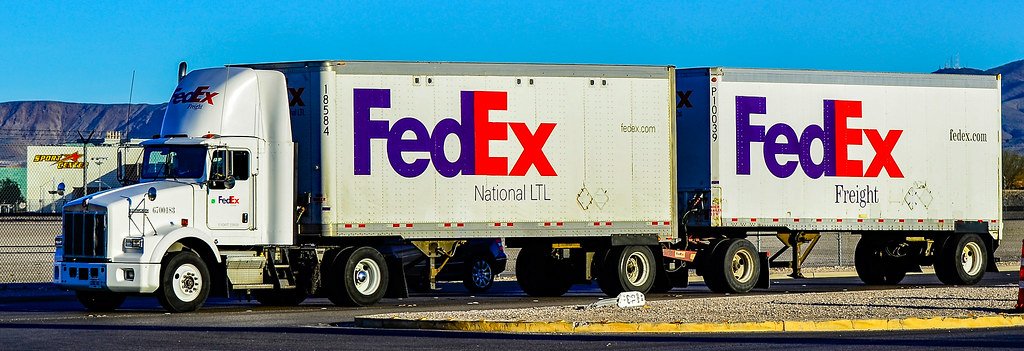Think LTL Freight Is Simple? Think Again.
Booking Less-than-Truckload (LTL) freight might seem straightforward—until a small oversight leads to big charges, missed deliveries, or frustrated customers. Whether you’re a seasoned shipper or dipping your toes into logistics for the first time, even minor errors in the LTL process can snowball into expensive problems.
Imagine this: You send out a shipment with what you think is the right class and dimensions—only to receive a hefty reclassification fee days later. Sound familiar? You’re not alone.
LTL shipping offers a cost-effective way to move freight without booking an entire truckload, but navigating it successfully takes attention to detail and a working knowledge of how carriers operate. In this article, we’ll break down the most common mistakes people make when booking LTL freight—and how you can avoid them.
Why It Pays to Understand the LTL Landscape
Before diving into specific errors, let’s cover why avoiding these mistakes really matters:
- Extra costs: From accessorial fees to reweigh charges, surprises aren’t fun—especially when they hit your bottom line.
- Delays and disruptions: Missed pickups, incomplete paperwork, or improper packaging can throw your entire supply chain off course.
- Reputation damage: If your shipment arrives late or damaged, your brand takes the hit, not the carrier.
Now, let’s dig into the most common LTL freight booking mistakes—and how you can sidestep them like a pro.
1. Guessing the Freight Class
Why It’s a Problem:
LTL freight pricing is based in part on freight class, which reflects your shipment’s density, value, handling, and liability. Misclassifying your freight is a fast track to surprise costs.
The Fix:
Use the NMFC classification system or consult with your carrier or a freight broker. Many third-party logistics (3PL) companies also offer tools that can help calculate the correct class based on dimensions and weight.
👉 Pro Tip: Never guess. Always measure and weigh accurately, and classify accordingly.
2. Incorrect or Incomplete Documentation
Why It’s a Problem:
The Bill of Lading (BOL) is the legal contract between you and the carrier. If it’s missing key details—like freight class, address, or special services—you could face delays, misdeliveries, or extra charges.
The Fix:
Double-check every field on your BOL before pickup. If you’re using a freight platform or 3PL, confirm that their system auto-generates a BOL that includes all the required details.
📄 Include:
- Correct freight class
- Shipper/consignee info
- Any special handling needs
- Declared value (if applicable)
3. Underestimating the Importance of Packaging
Why It’s a Problem:
Poor packaging doesn’t just risk product damage—it could also lead to liability issues or rejections from carriers.
The Fix:
Follow best practices for LTL packaging:
- Use strong, stackable pallets
- Secure freight with shrink wrap and straps
- Avoid overhangs and protrusions
- Label each piece clearly
📦 Bonus: Good packaging also helps ensure your freight is measured and classified accurately.
4. Failing to Account for Accessorial Charges
Why It’s a Problem:
Did you need a liftgate? Was there inside delivery involved? Residential delivery instead of business? If you didn’t specify these up front, they’ll be added as surprise fees after delivery.
The Fix:
Ask yourself:
- Does the pickup/delivery location have a loading dock?
- Will the driver need to call ahead?
- Is this location residential or limited access?
Declare all special services when booking. It’s better to pay a small fee upfront than face penalties later.
5. Not Confirming Delivery Appointments or Cutoff Times
Why It’s a Problem:
Not all LTL shipments operate on-demand. Missing cutoff times, holidays, or failing to set a delivery appointment can cause unnecessary delays.
The Fix:
- Communicate with your consignee to coordinate delivery windows.
- Check with your carrier for cutoff and transit times.
- Use tracking tools to stay updated.
⏰ Carriers work on tight schedules—help them help you by planning ahead.
6. Skipping the Use of a Freight Broker or 3PL
Why It’s a Problem:
If you’re managing LTL freight in-house without much experience, you might be missing out on better rates, insights, or service options.
The Fix:
Partner with a trusted 3PL or freight broker who can:
- Offer competitive carrier rates
- Navigate NMFC codes and documentation
- Assist with claims, scheduling, and tracking
- Provide insurance options and value-added services
According to Forbes Advisor, 3PLs have become essential to navigating today’s fragmented freight market and offer a strategic advantage for growing businesses.
Conclusion: Smarter Shipping Starts with Awareness
Booking LTL freight doesn’t have to be a headache—but it can become one if you overlook the details. By staying informed, using the right resources, and avoiding these costly mistakes, you’ll save time, money, and frustration.
Think of it this way: Every smooth shipment builds trust with your partners and customers. So the more proactive you are with booking LTL freight, the more reliable your entire supply chain becomes.
🚛 Need help finding the right LTL freight partner or optimizing your process? Don’t hesitate to reach out to a logistics consultant or trusted 3PL to streamline your next shipment.
FAQ: LTL Freight Booking Demystified
Q1: What is the most common mistake people make when booking LTL freight?
A: Misclassifying freight is a top issue. It leads to reclassification fees and delays. Always confirm the correct NMFC code.
Q2: How can I avoid unexpected fees when shipping LTL?
A: Disclose all accessorial needs upfront (like liftgates or residential delivery) and ensure documentation is complete and accurate.
Q3: Do I need freight insurance for LTL shipping?
A: While carriers have limited liability, purchasing supplemental insurance protects you in case of loss or damage—especially for high-value items.
Q4: Can I ship anything via LTL freight?
A: Not everything qualifies. Hazardous materials, extremely fragile goods, or oversized items may require special services or full truckload shipping.
Q5: How do I find the best LTL freight rates?
A: Compare rates from multiple carriers using a freight broker or digital freight platform. Consider not just cost, but transit time and reliability.
Sources:





